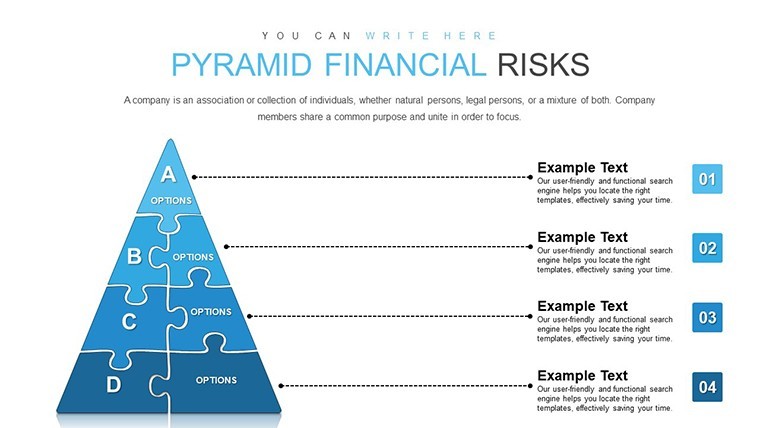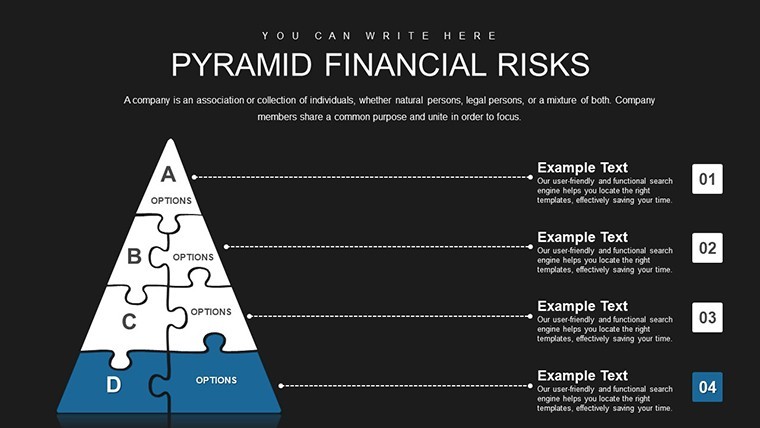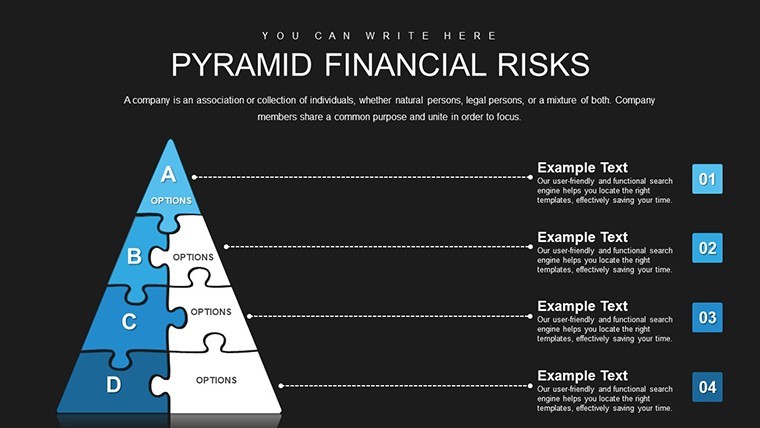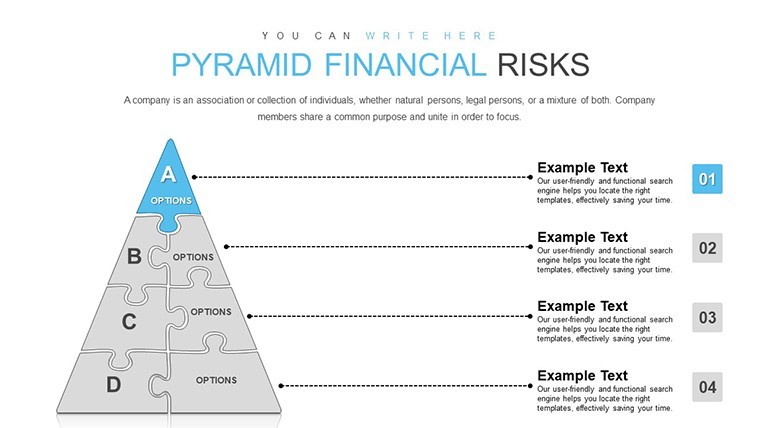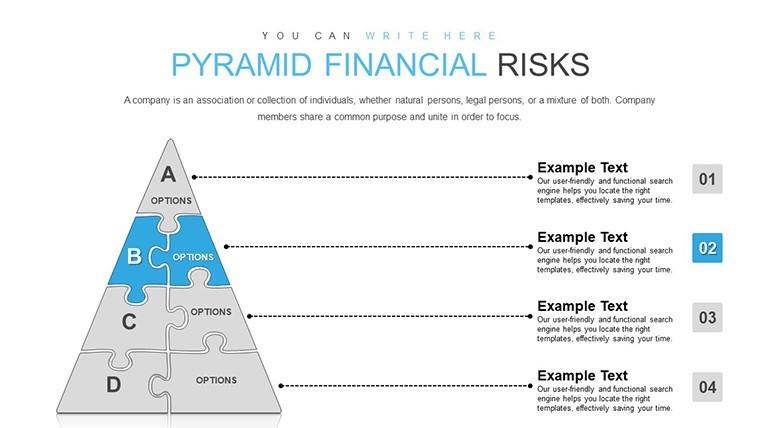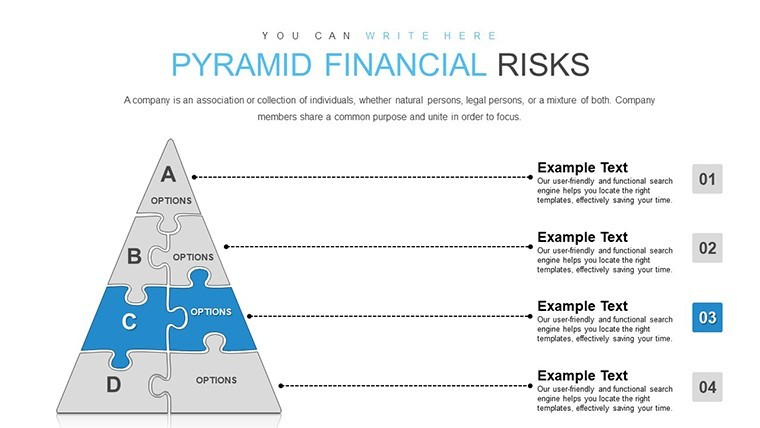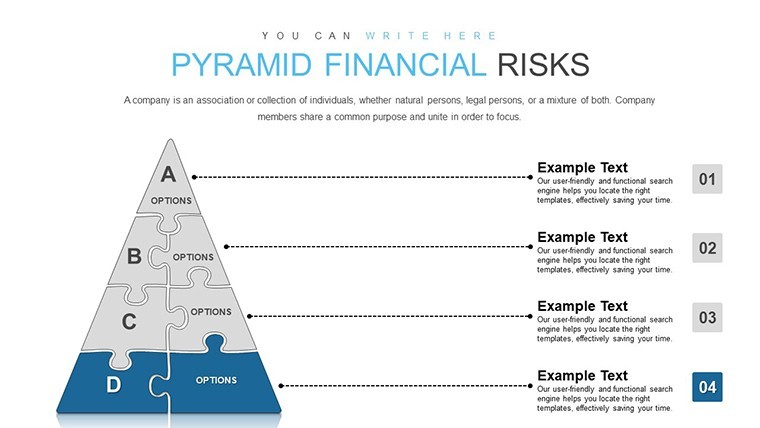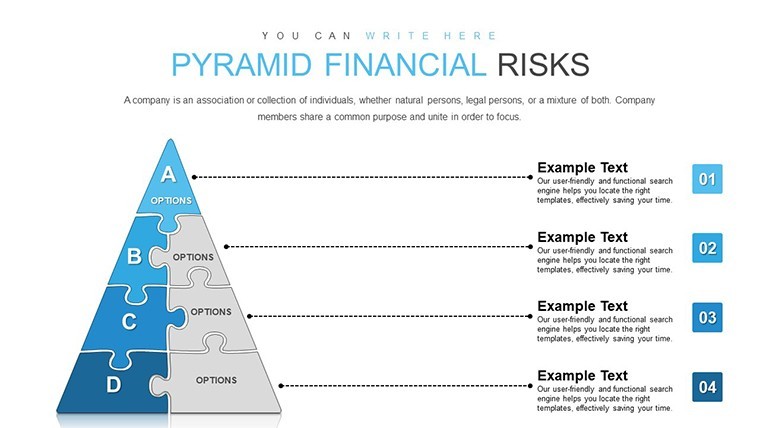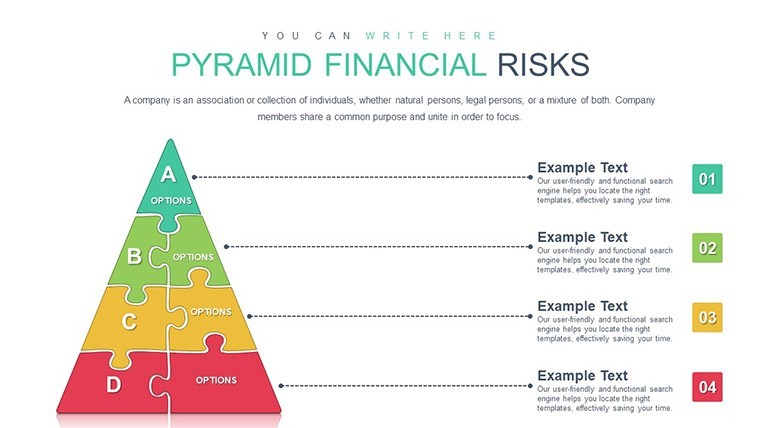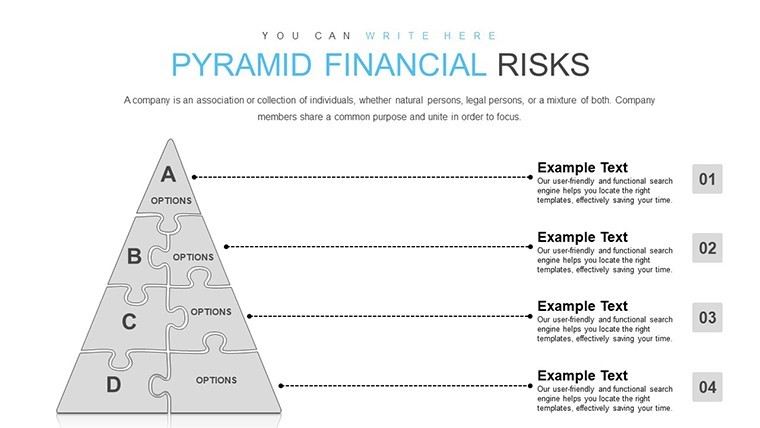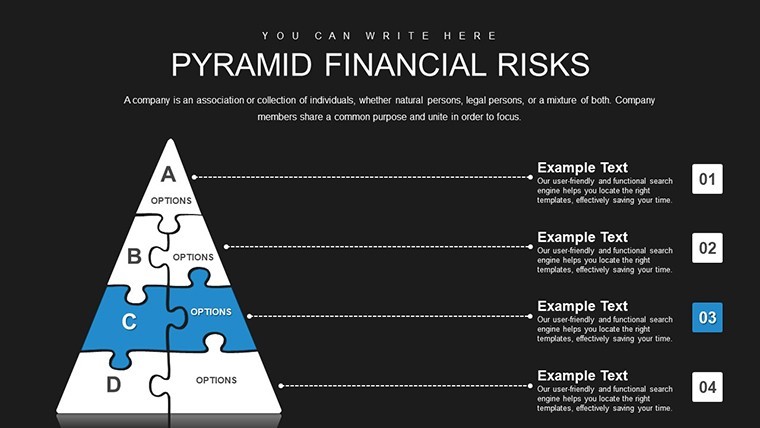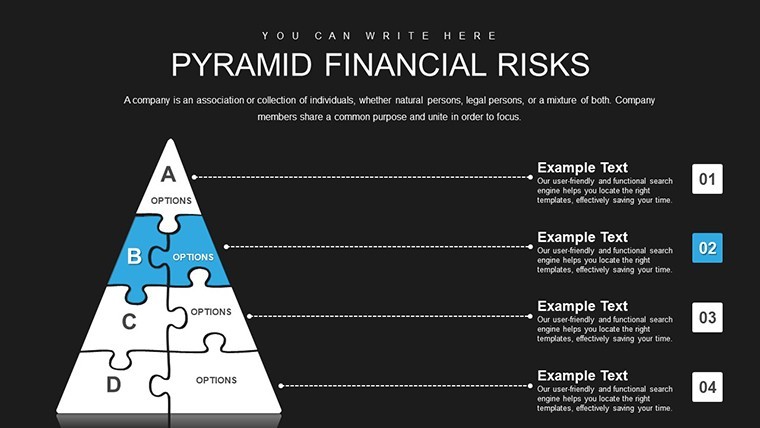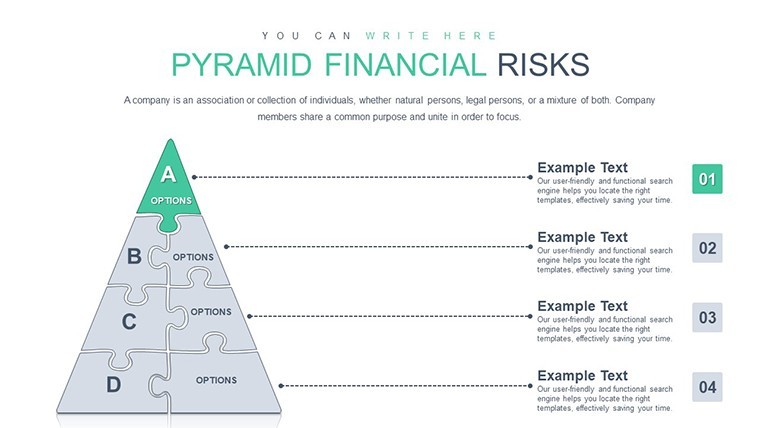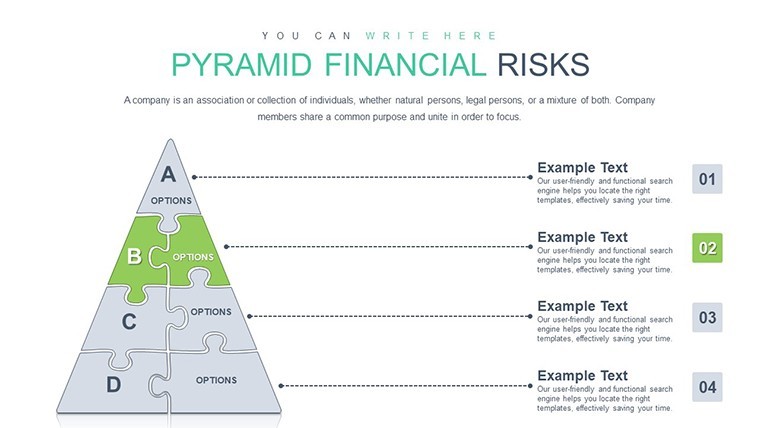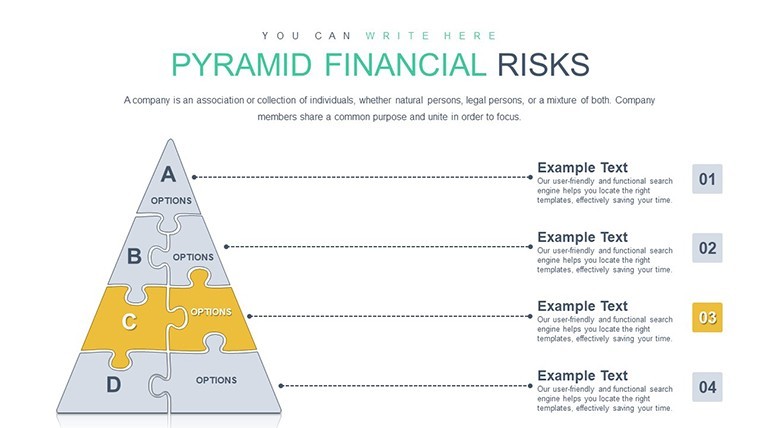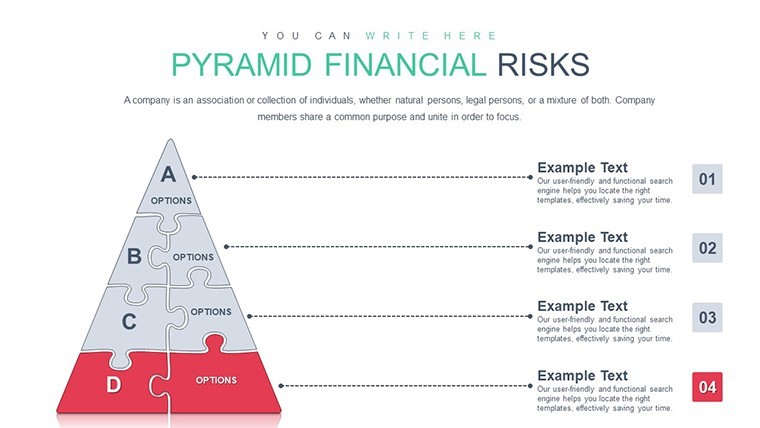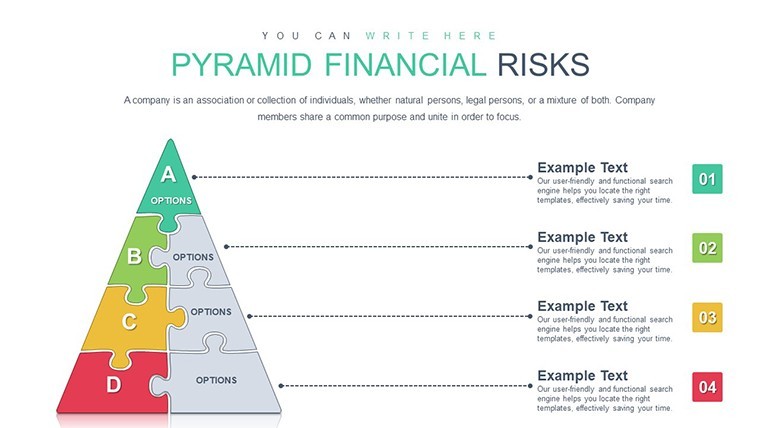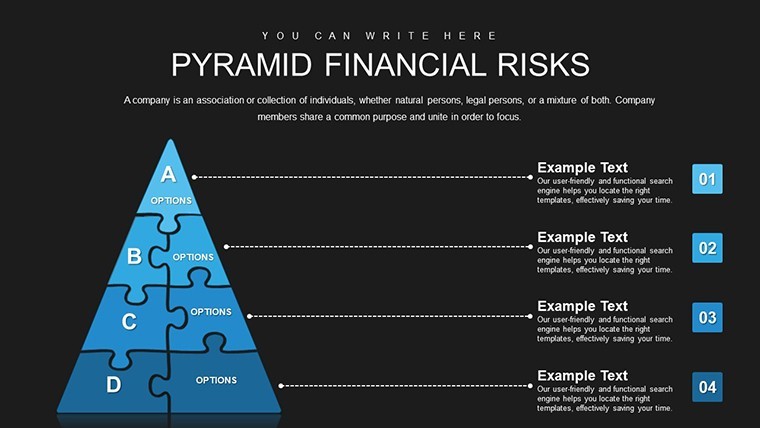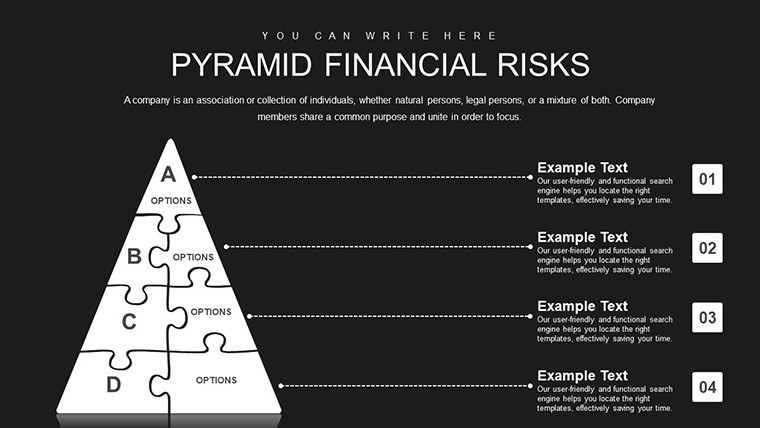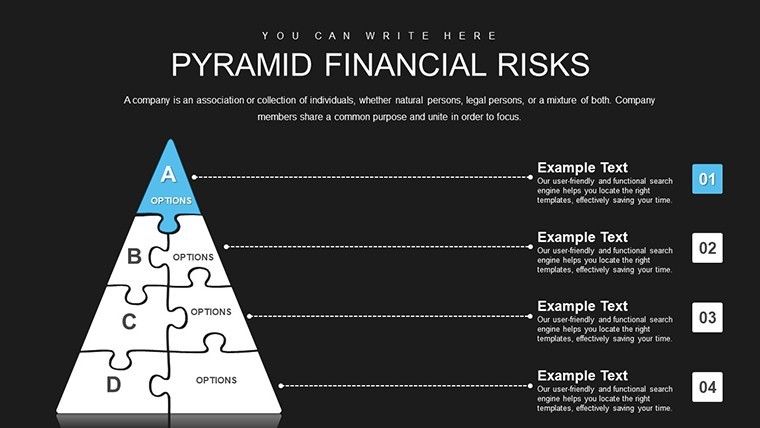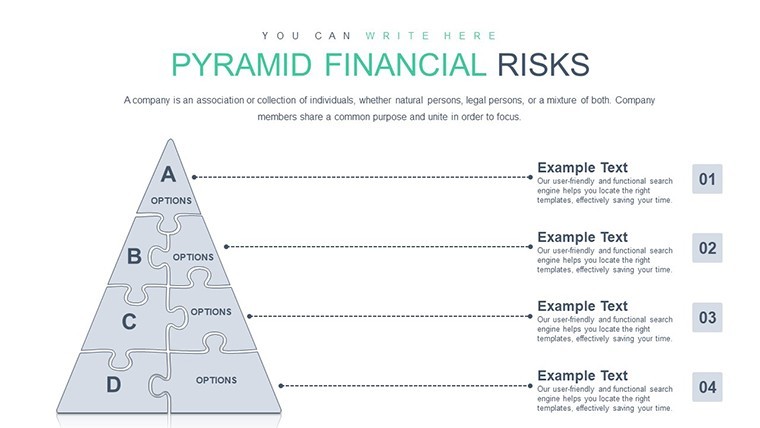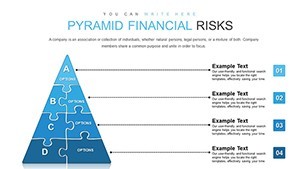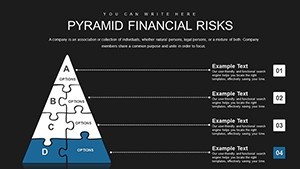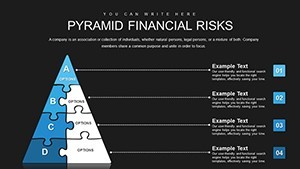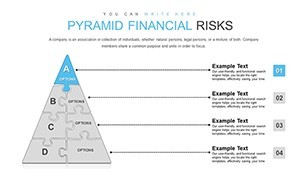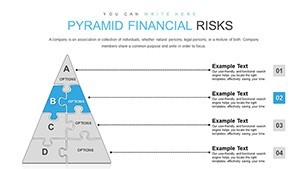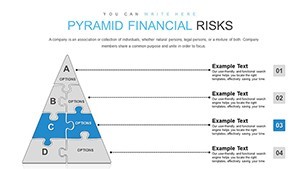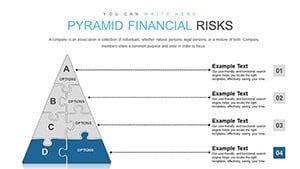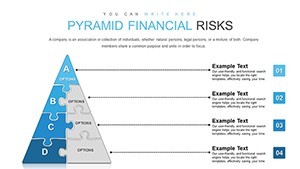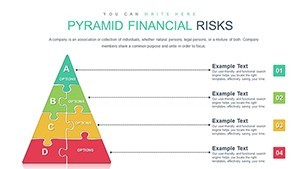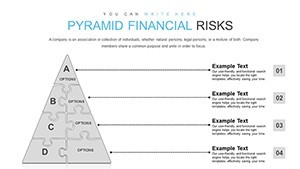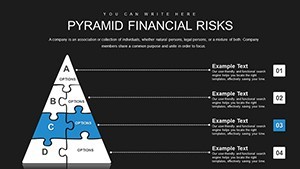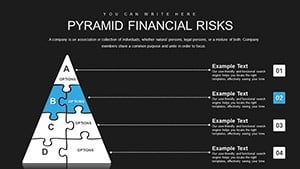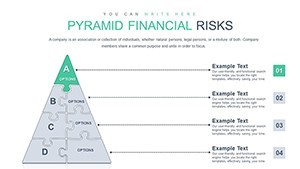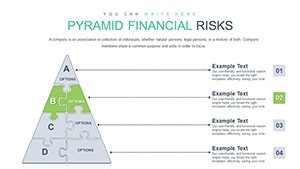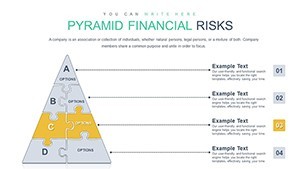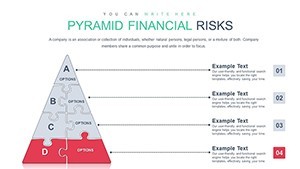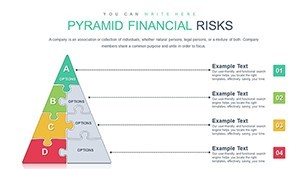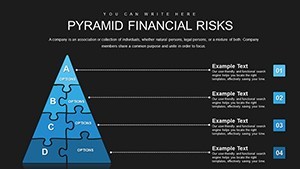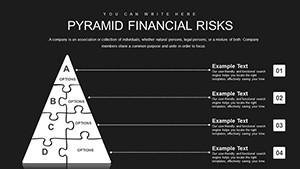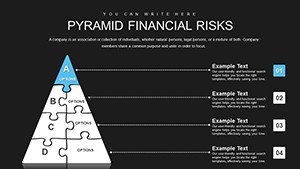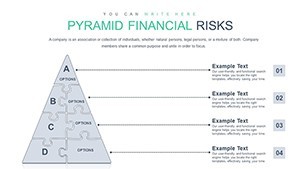Promo code "00LAYOUTS"
Pyramid Financial Risks Charts: Master Risk Visualization in Keynote
Navigating the layers of financial risks demands more than spreadsheets - it requires visuals that prioritize and persuade. Enter our Pyramid Financial Risks Charts Template for Keynote, a game-changer for professionals who turn data into decisions. With 21 meticulously designed slides, this template uses pyramid structures to layer risks from base-level probabilities to apex criticalities, making complex analyses accessible. Tailored for financial advisors, compliance officers, and C-suite leaders, it draws on principles from frameworks like ISO 31000, ensuring your presentations resonate with authority and clarity.
Inspired by real-world successes, such as risk pyramids in World Bank reports that simplify global economic threats, this tool empowers you to craft narratives that stick. Fully compatible with Keynote on Mac and iPad, it offers seamless editing without plugins, saving precious time in high-stakes environments. As a copywriter specializing in finance comms, I've witnessed how such visuals transform dry reports into compelling stories, boosting stakeholder buy-in and driving strategic actions.
Why Pyramid Charts Revolutionize Financial Communication
Pyramids excel at hierarchy, mirroring how risks build upon each other - operational at the foundation, strategic at the peak. This template includes five pre-built variations for credit, market, and liquidity risks, each editable to reflect your dataset. Align with ERM (Enterprise Risk Management) standards from COSO, where visual layering aids in identifying tolerances and mitigations.
Customization is effortless: Adjust tiers for depth, color-code for urgency, and integrate icons for quick scans. In banking pitches, akin to those at JPMorgan, pyramids highlight exposure cascades, fostering proactive discussions. This not only meets regulatory needs but enhances by showcasing expert structuring of information.
Essential Features for Seamless Risk Storytelling
- 21 Customizable Slides: Hierarchical pyramids ready for data on risks like cyber threats or economic shifts.
- Professional Typography: Clean fonts that comply with accessibility standards, ensuring readability.
- Lightweight Design: Quick loads and edits, perfect for on-the-fly updates during audits.
- Keynote-Exclusive Tools: Leverage shape editing and gradients without external software.
- Versatile Layouts: From single pyramids to comparative multi-views for scenario planning.
These elements stem from best practices in data viz, as advocated by experts like Stephen Few, prioritizing insight over ornamentation.
Practical Use Cases: From Boardrooms to Classrooms
For a fintech startup pitching investors, use pyramid slides to stack funding risks - market entry at base, scalability at top - drawing from Y Combinator demo day successes. In corporate strategy, mirror McKinsey's risk matrices visually, aiding in portfolio diversification talks.
Educators in MBA programs employ these for case studies on Enron-like failures, layering ethical risks atop financial ones. Step-by-step integration: Import data via copy-paste, resize tiers proportionally, add annotations for context, and animate builds for emphasis. Versus competitors' bloated templates, ours is streamlined, reducing cognitive load as per Nielsen Norman Group UX research.
Tips to Amplify Your Pyramid Presentations
Combine with bar graphs for quantitative backups, ensuring balanced decks. Use subtle gradients to denote risk gradients, and always test on projectors for color fidelity. For trustworthiness, embed hyperlinks to sources like FASB standards, reinforcing your authoritative stance.
This template outpaces generic options by focusing on finance-specific hierarchies, with no bloat - pure efficiency for busy pros.
Elevate Your Expertise with Targeted Risk Visuals
In a volatility-prone market, as per IMF analyses, clear risk comms are vital. Our pyramid charts facilitate this, supporting dark/light modes for versatile delivery. Imagine auditing sessions where visuals preempt questions, or compliance trainings that engage rather than bore.
With value props like time savings and polish, it's an investment in your professional edge. Subtle CTAs guide: "Visualize Risks Smartly - Start Customizing."
Wrap up your next presentation with confidence; this template turns risks into opportunities. Ready to pyramid your way to success? Dive in and differentiate.
Frequently Asked Questions
How editable are the pyramid tiers?
Fully - adjust levels, labels, and colors in seconds via Keynote's intuitive interface.
Does it work on older Keynote versions?
Yes, compatible from Keynote 6.0 onward, ensuring broad accessibility.
Can I add my own data sources?
Easily integrate Excel imports or manual entries for personalized risk models.
Is it suitable for non-finance risks?
Adaptable for project or HR risks, broadening its utility.
What makes it better than free alternatives?
Professional designs and finance focus provide superior polish and relevance.
How do animations enhance the pyramids?
Build sequences reveal layers progressively, improving narrative flow.

